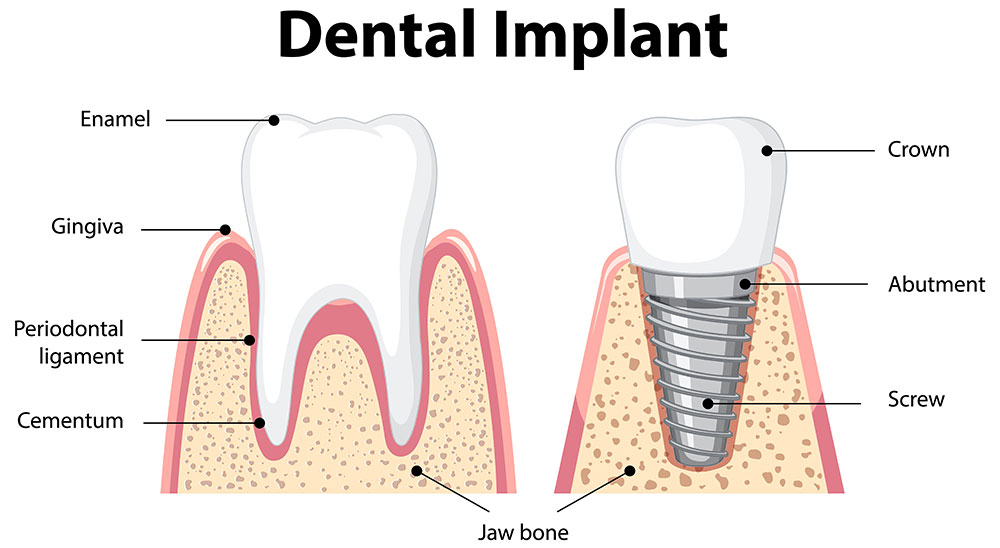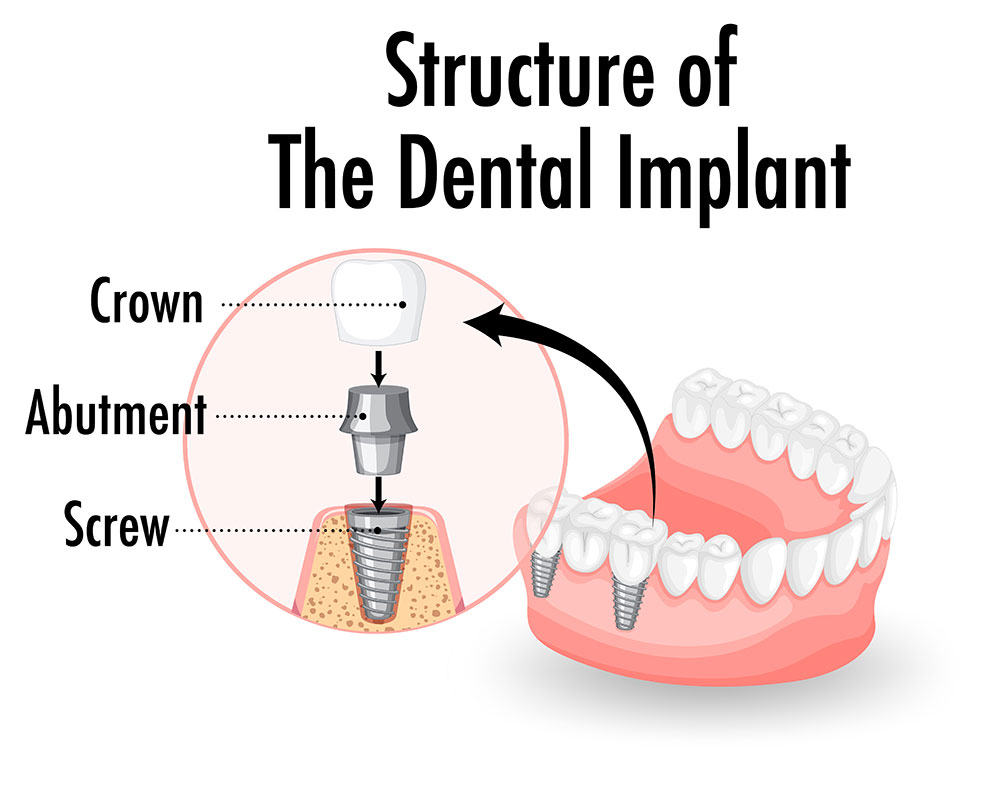Dental Implants
Tooth loss is more common than many realize—and it doesn’t discriminate. Whether it’s due to age, injury, decay, or gum disease, losing a tooth can change how you chew, how you speak, and how you feel about flashing your smile. But here’s the good news: modern dentistry has a remarkable answer. Enter dental implants—a solution that not only looks and feels natural but restores both function and confidence.

What are dental implants?
When it comes to replacing missing teeth, dental implants are often the go-to choice—for good reason. They’re strong, long-lasting, and built to feel just like the real thing. Simply put, they act like artificial roots—small titanium anchors that are gently placed into the jawbone to support a new tooth from the ground up. Over time, they bond with your bone in a process called osseointegration, creating a stable foundation for a crown, bridge, or even a full set of teeth.
Titanium is typically the material of choice for the implant screw because it’s biocompatible (your body doesn’t fight it), strong, and long-lasting. The top part—the visible tooth—is a custom-made dental crown designed to match your natural teeth in color, shape, and function.
The Dental Implant Procedure: What to Expect
Getting a dental implant isn’t a one-and-done appointment—it’s a process. But for many patients, it’s more than worth it.
- Consultation & Imaging: It all starts with an initial exam, where your dentist assesses bone density, gum health, and overall oral condition. Advanced imaging—like X-rays and CT scans—gives your dental team a detailed roadmap, ensuring the implant is placed with pinpoint precision.
- Implant Placement: During a minor surgical procedure—usually done with local anesthesia—the titanium post is placed directly into the jawbone.
- Healing Time: This is where patience plays a big role. It takes a few months for the implant to bond naturally with your jawbone—a crucial step for long-term stability.
- Abutment & Impressions: Once healed, an abutment (connector) is attached, and impressions are taken to design the final dental implant crown.
- Crown Placement: The final step is fitting and securing the crown—crafted to blend seamlessly with your smile.

Risks and Considerations
Dental implants boast a high success rate—over 95%—but like any surgical procedure, there are risks. Infection, implant failure, and nerve damage are the most common concerns, though they’re rare when performed by experienced professionals.
Upper jaw implants come with an extra consideration: the sinus cavity. If the implant sits too close or penetrates the sinus lining, it may lead to sinus issues. There’s also the slim possibility of allergic reactions to titanium, though alternative materials like zirconia are available.
Dental Implants vs. Dentures and Bridges
Why do so many people choose implants over more traditional options?
- Stability: Unlike dentures, implants don’t slip or shift when you talk or eat.
- Longevity: With good care, implants can last a lifetime. Dentures and bridges often need replacement after 5–10 years.
- Jawbone Preservation: Implants stimulate bone growth, preventing the bone loss that often follows tooth loss. Dentures? Not so much.
- Natural Feel & Look: Implants don’t just restore function—they blend in beautifully, offering a lifelike appearance.
Caring for Your Implants
Post-surgery care is where you help lock in your long-term results. The rules? Pretty simple, actually.
- Brush and floss daily—just like with natural teeth.
- Use a soft-bristled brush and non-abrasive toothpaste.
- Stick to a low-sugar, balanced diet during healing to reduce inflammation.
- See your dentist regularly for check-ups and cleanings.
- Avoid smoking—it slows healing and increases the risk of implant failure.
With just a little bit of diligence, your implants will stay strong and beautiful for decades.
Best Dentists in Washington & Oregon
In Closing: A Lasting Solution
Dental implants aren’t just a fix—they’re a transformation. They restore your smile, your confidence, and your quality of life. Whether you’re missing one tooth or several, implants offer a long-term solution rooted (literally) in science and crafted with care.
If you’re thinking about making the leap, start by talking with a dental professional. Every smile is different, and a personalized consultation is the best first step toward reclaiming yours—stronger, brighter, and built to last.
